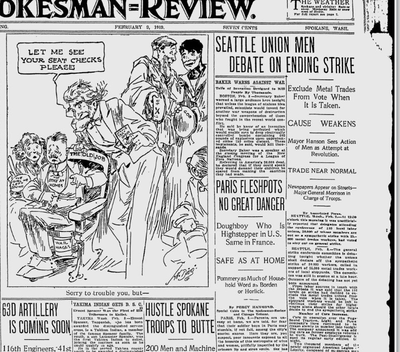100 years ago in Seattle: Mayor calls Seattle strikers ‘revolutionists’ as labor leaders consider calling off general strike

Labor leaders in Seattle were meeting to decide whether to call off the general strike, in which 30,000 workers had gone on strike in sympathy with 25,000 shipyard workers.
The general strike was not going the way the unions had hoped. Tacoma, Spokane and other cities had not joined with the strike, and some of the striking workers in Seattle had already peeled off. Seattle’s streetcars were resuming service and the Seattle Post-Intelligencer resumed publication. Some schools reopened after striking janitors and engineers went back to work.
Seattle Mayor Ole Hanson continued to take a hard line against the strikers, claiming that they were acting more like “revolutionists” than strikers. U.S. Army troops were stationed in Seattle and Tacoma in case trouble broke out.
This had become a huge national story. The New York Tribune said: “The Seattle district has been the labor trouble breeder since the beginning of the war. There are probably more syndicalists, I.W.W., bolsheviki, and direct-action socialists in the Pacific Northwest than in any other part of the country.”
Meanwhile, labor troubles were brewing east of Spokane as well. Soldiers from Fort George Wright in Spokane were heading to Montana to deal with a major Butte miners strike.
About 200 soldiers left Spokane for Butte “to keep striking miners and I.W.W.s (Wobblies) in check.”